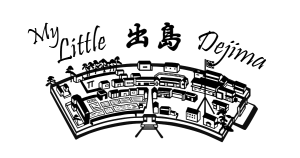
Japanese is a difficult, yet beautiful language in all its complexity with different writing systems, politeness levels, myriads of situational phrases, abundance of practical idioms and painstaking onomatopoeic expressions. In the age of Youtube, anime & manga, learning apps and language blogs, the language has become much more accessible in recent years with younger generations literally soaking it up like sponges. One finds a plethora of free material available online for everyone to use. I think it’s great people sharing their experiences and exchanging on the learning process, so to encourage others for the Japanese language, which has much to offer.
I sometimes resort to such online sources, too, to alternate my study routine, however, even no longer residing in Japan for some years now, JAPANESE TEXTBOOKS are still my tool of choice, when learning on my own. This is because I am more the visual type of learner and having a book in front of me is something soothing. I can rely on that the content is accurate, carefully thought out and prepared for students of all grades. If you stick to a certain series, they usually built up on content and are well structured to facilitate the learning process. Some even come with helpful audio material, that you can easily load onto your smartphones or music players to take it around listening. There are numerous reasons, why traditional textbooks are still a good investment and have their legit place because I think they teach you also a lot of things that online tools don’t. Following, I give you a list of books I personally have worked with in language schools and in private. I hope the one or the other will find this helpful:
Beginner Level
Probably the most popular and frequently used textbook series at present, Genki Integrated Courses and Workbooks I (orange) + II (green), Kanji Illustration and Practice Book. I used them during the first 3 months of my studies before I moved on to a different school that used another series as its main instruction moduls. The Genki series is compact and also comes with some cultural references in the newer editions, which I find nice. However, the two volumes will only bring you up to about intermediate level (if you want to obtain more details on the books or like to buy them, click on images to visit amazon.co.jp):
MINNA NO NIHONGO (みんなの日本語) SERIES
In the intensive 1.5 year course, I visited, we primarily used the series of Minna no Nihongo I + II that is split up into a staggering 8 books with the main translations & grammatical notes books I+II (文法開設・ぶんぽうかいせつ), the workbooks I+II (本冊) as well as two smaller practice booklets with the standard exercise collection (標準問題集・ひょうじゅんもんだいしゅう) and the sentence patterns (文型練習帳・ぶんけいれんちょう) I+II. You sure will have a lot of books to carry around, but it’s definitely worth it. While the Genki series above is only available in English, Minna no Nihongo comes in English, German, French, Chinese for the translations & grammatical notes, everything else is in Japanese. I personally find it useful to more quickly accustom to the language and expressions often used in the classroom. Here I just list the most recent editions of the translations & grammatical notes and the workbooks (if you want to obtain more details on the books or like to buy it, click on images to visit amazon.co.jp):
All JLPT Levels
This series of books is more aimed as supplementary practice, rather than a stand alone course, therefore more ideal for drills, if you dare to take on the the JLPT (日本語能力試験・にほんごのうりょくしけん) to get in some additional hours of studying. Each character on the front page represents a learning topic for each level; the owl stands for kanji, the squirrel for vocabulary, the monkey for grammar, the bunny for listening and last but not least the sly raccoon for reading. Inside the books there are also other little characters that lead through the exercises and help you study. I always liked that about the Nihongo So Matome and it animated me to study. The books also contain plenty of useful references and look-ups on daily life topics.
Kanji (漢字・かんじ) Vocab (単語・たんご) Grammer & Reading
The N3 modules listed below are the English and Vietnamese 2016 editions (the former versions also contain Korean and Chinese)
The N2 modules listed below are the English and Vietnamese 2016 editions (the former versions also contain Korean and Chinese)
The N1 modules listed below contain explanations in English, Korean and Chinese and are the 2010 versions.
For a full overview on Japanese Learning Textbooks, click HERE.
The above list is by no means complete and I might add on other books later on. Please feel free to let me know what you think about the above or what experiences you have made with Japanese textbooks. Enjoy studying Japanese!
©MyLittle Dejima




























